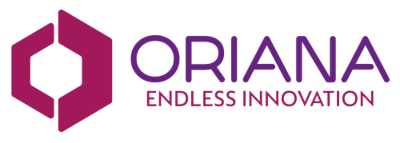Unified Communication can help businesses survive and even thrive in difficult times, providing an effective route to transformation. In Contact Centers, low-code solutions are able to significantly boost efficiency and give added value.
It’s clear by now that the year 2020 will not go quietly into history. Indeed, it might be defined as the year everything changed. It’s now a commonplace to hear that, in addition to the huge challenges that the pandemic has forced businesses to confront, there are also opportunities. The mass of people working from home shows that there is huge potential for change, and that companies can survive if they are willing to flex and adapt. Even traditional businesses such as food retailers, or consumer goods companies, have increasingly embraced online sales and ordering. Whatever happens in terms of worldwide health, these new ways of working aren’t likely to reverse.
Unified Communication is one of the tools which is increasingly playing an important part in the survival and even growth of many businesses. It’s the joining-up of all the elements of communication previously used by a business, in a sleeker, more effective and efficient form.
Opportunities for change
Contact centers have long been the main interface with customers for many businesses and organizations. Typically these were highly operator intensive, often with employees spending a great deal of their time handling routine, predictable and repetitive tasks, such as bill enquires, or routine processes like recording a new address or phone number. The system worked, kind of, and there was the feeling of, ‘If it ain’t broke, don’t fix it.’ Sure, it was easy to see that a room full of partially-trained operators (usually with high employment churn) might not be the most efficient way of developing customer relationships, but what was the alternative? Customers too were used to waiting forever in a call queue, and then quite likely not receiving the service they’d expected. An unsatisfactory situation for both sides.
And then along came this strange year of 2020, with a host of ‘new normals’ as everyone scrambled to change their ways of working. Contact centers could no longer function as they had before. Smart managers who are both customer- oriented and business- focused started looking for opportunities tofor change. That means embracing new processes and technologies, and finding ways of offering more to customers. And this isn’t just some abstract idea of ‘more’. We are all customers and consumers of something, and have become used to some companies providing excellent customer service. Those that don’t look like dinosaurs, but thankfully the phrase, “I’m sorry, the computer won’t let me do that,” seems to be used less these days. Customers know what they want – a seamless service which fulfils their queries and requirements – and companies know they have to give it.
And so Unified Communication for Contact Centers comes into play, with benefits including reduced operational costs, a more seamless customer experience, and the potential to offer new and enhanced services.
The technology of change
Human-to-human interaction is still very important of course, but for very many processes, combinations of AI, voice recognition and Robotic Process Automation can go a long way. Take onboarding of customers for example. In the recent past, if you wanted to open a bank account, this would require you to go to a bricks-and-mortar building with a pile of paperwork and ID documents, where an office worker would fill in forms as you answered their questions. Days or even weeks later, you might receive the paperwork to say your account was now open. Or not. If not, then you’d have to start the tedious process of calling the customer center to figure out what had gone wrong.
Now onboarding can be accomplished swiftly and efficiently, using the facilities of just a mobile telephone, and no contact center operator required. One of the clear advantages of this kind of intelligent process application is that costs are reduced. What it also means is that when a customer and operator do come into contact, their interaction is more specialized and meaningful. The routine tasks have already been accomplished, including screening out of FAQs and iterative processes. Now the customer can receive quicker and better service.
Dynamic Case Management
So win-win, but how is this achieved? One key approach is that of Dynamic Case Management, where sometimes widely differing criteria and information come together in a ‘case’, rather like in professions such as medicine and the law. Key to this is digitalization, so that the many factors needed to establish the case can all be machine-accessible, and storable in the same place. In the onboarding example for banks, there are several non-digital assets which enter the digital realm through the use of a mobile phone. This may involve a snapshot of a passport or driving license, a ‘mugshot’ of the user, and voice or finger prints. A ‘case’ can then be built where all the different factors are joined up. That makes for swift operation, and an enhanced customer experience.
Put another way, this joined-up thinking is part of an overall Unified Communication approach which must provide seamless Open API-based integration to existing Call Center omni-channel communication systems. Naturally distribution of calls and other communications such as emails and chatbot messages, must also be managed to qualified call center agents, based on a skill matrix. There must also be perfect integration to third-party Knowledge Base software already in use, and to different source systems.
Contact Centers are not just for when things go wrong, when complaints have to be handled. A big advantage of making processes more streamlined is that this releases operators to do more productive work with clients. This can include introducing special offers and new services, or upselling existing offers. Time can also be spent with customers asking for their preferences and experience with products and services, in order to gain insights and drive product development. There are many benefits to be gained from rationalizing and updating a Contact Center, and it is not merely in cost savings that companies benefit. Moreover, Contact Center Managers can now, for the first time get real performance metrics from the system, with a solution which helps organize back-office processes such as ticketing, case management, and issue handling.
Extend your Unified Communication platform: Enter low-code solutions
One of the most enabling methods of going about redesigning Contact Centers is to use the enablement of low-code, as exemplified by Oriana’s platform. It is based on a simple building block approach, using a large library of templates that meet the basic needs of almost any business situation. The beauty of Oriana’s platform is that these blocks of code can be infinitely arranged and re-arranged to create the perfect workflow – all with little or no programming knowledge. Users of a system can have input to making it perform exactly as they wish. If it doesn’t do everything they need first time, then the graphic nature of the platform allows re-configuration very quickly. Ultimately, it’s usual for the IT department of an organization to have final sign-off on how Oriana’s low-code platform is utilized, but the process of creating workflows is simple, and can be in the hands of the departmental users, who truly understand the business case. Oriana can also be used organically to develop other areas within a business. Once one application is up and running, and proved, other departmental needs can be attended to, using the same platform across the whole business. Meanwhile, the core ERP system is unaffected by any changes, as Oriana ‘sits on top’ and all processes occur within the platform. Systems that were previously isolated from the main system are also ‘brought in’ by Oriana, so that data across the whole business can be accessed and shared, with the ability to mine the rich seams of data across the entire company.
Survive, adapt, thrive?
These days, many businesses are in a battle to survive. Others are adapting, often quite successfully to the new conditions. A third and smaller category are doing better in the pandemic. All three can benefit hugely from creating sleeker, more effective Contact Centers to enhance the experience of their customers, and to mine entirely new data and opportunities. Achieving all that is possible by using a prescriptive low-code platform, of which Oriana is a prime example, with specific Contact Center-ready modules available, and a wealth of experience of guiding clients in leveraging new opportunities. Contact Center Managers need 360-degree insight into operative tasks and their impacts, and that’s exactly what they get with Oriana.



